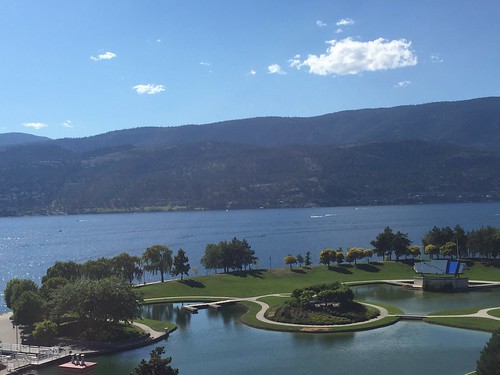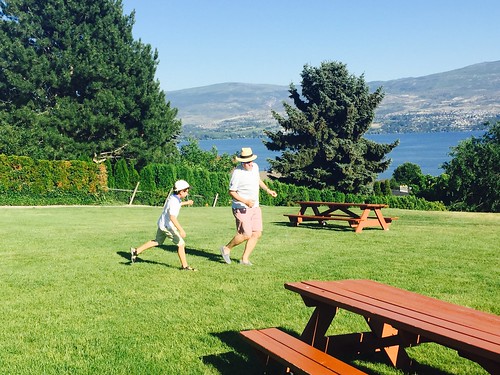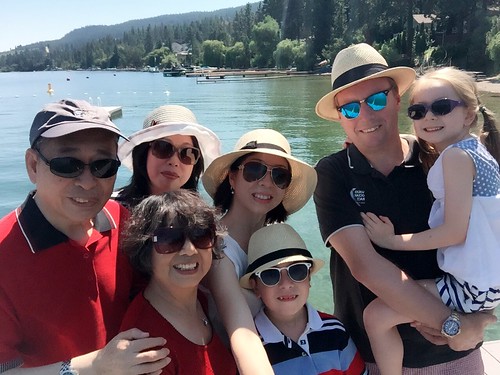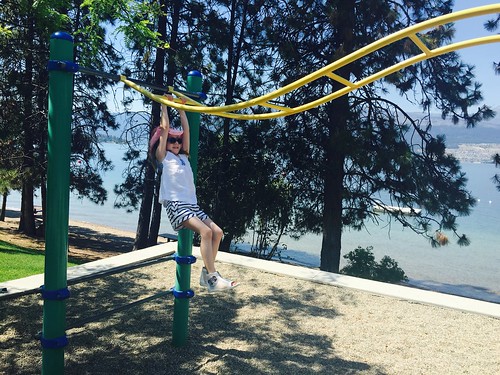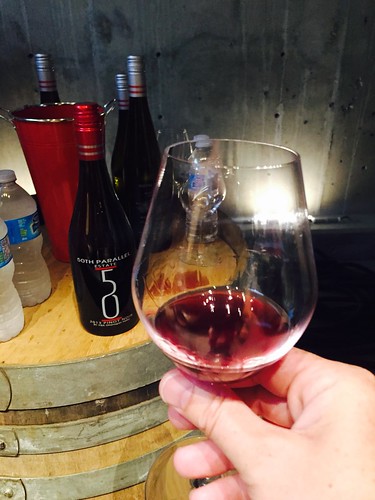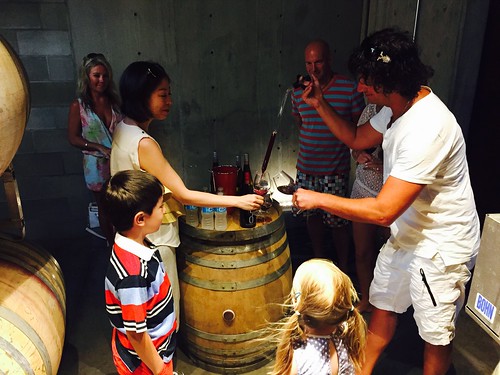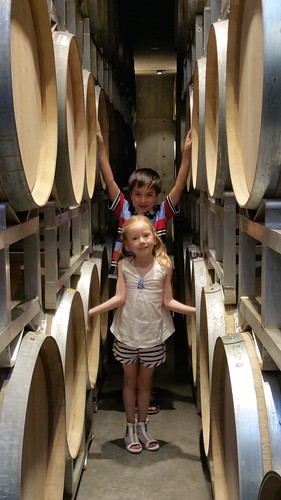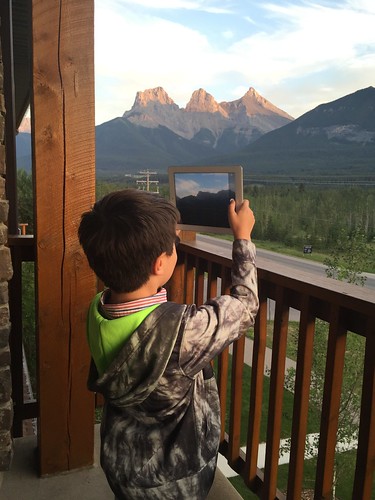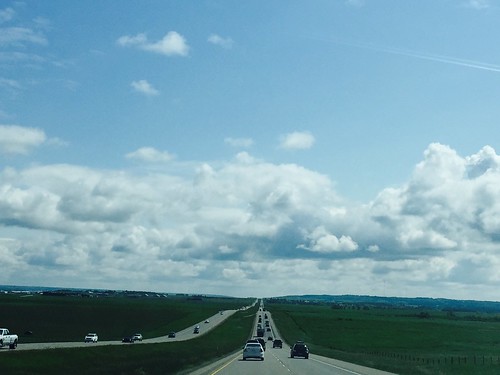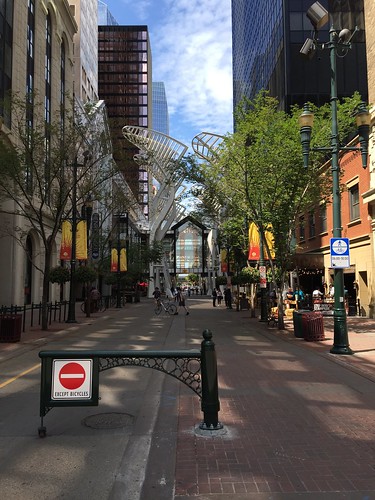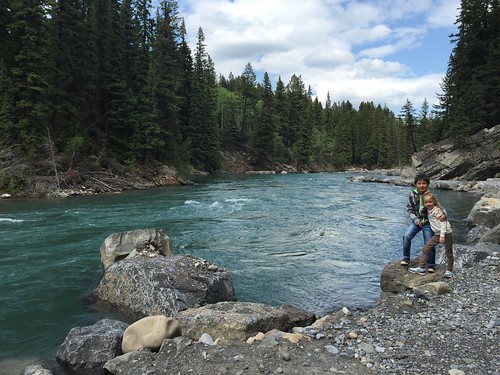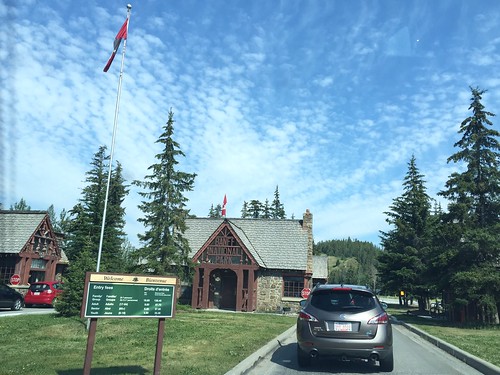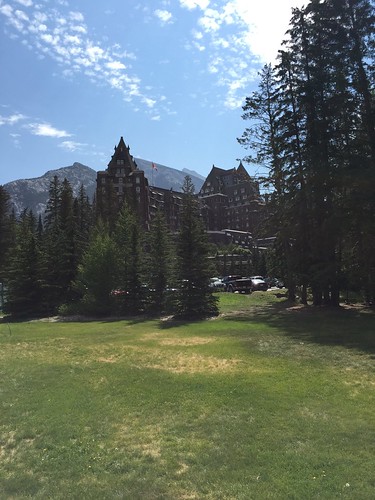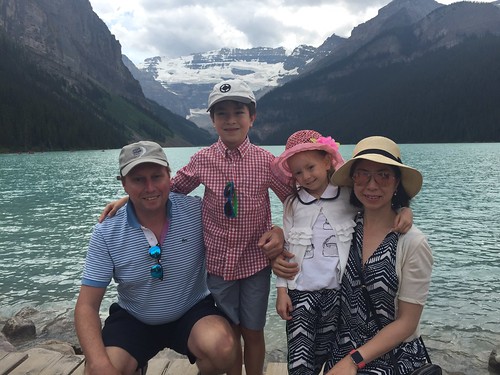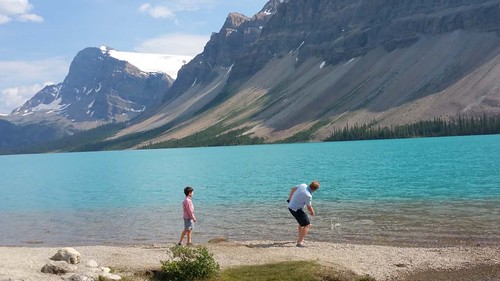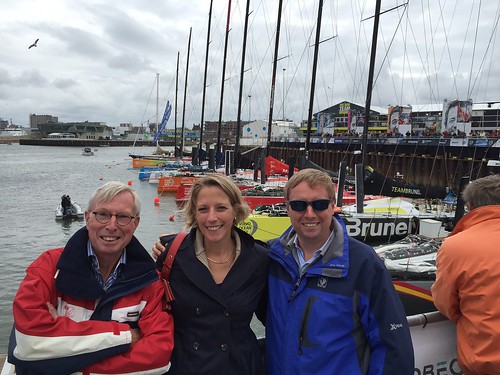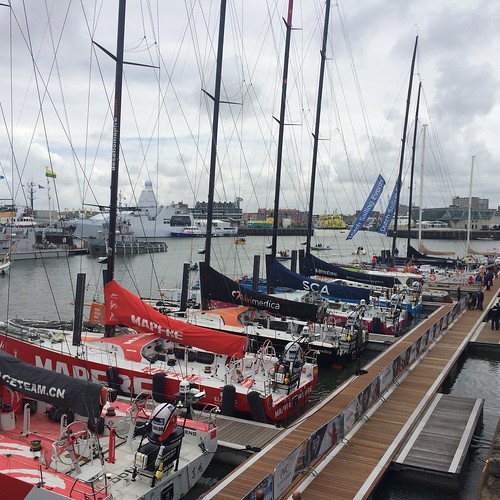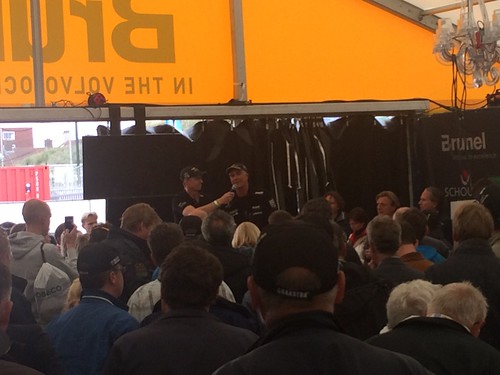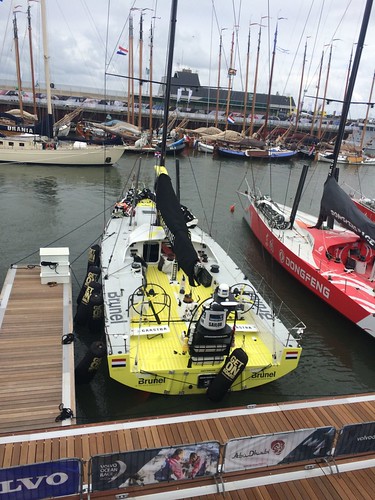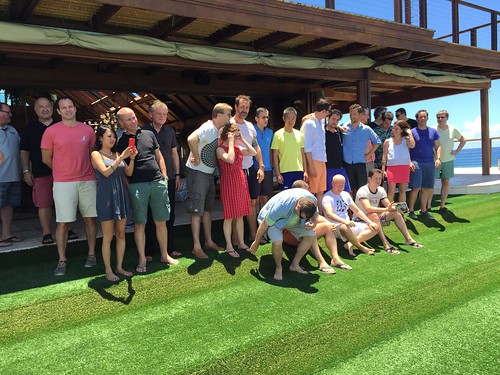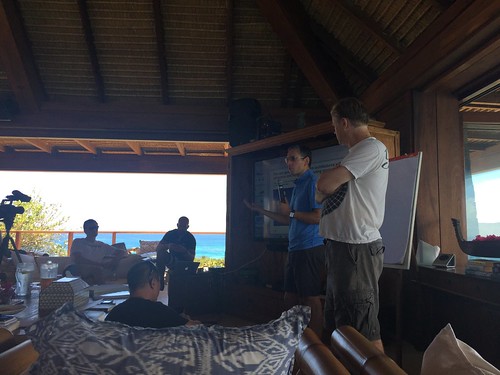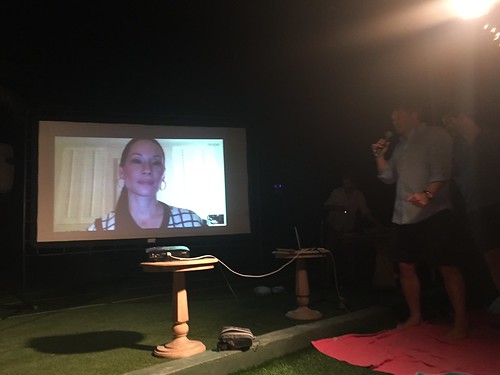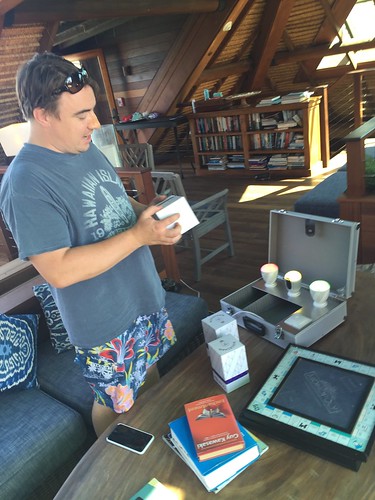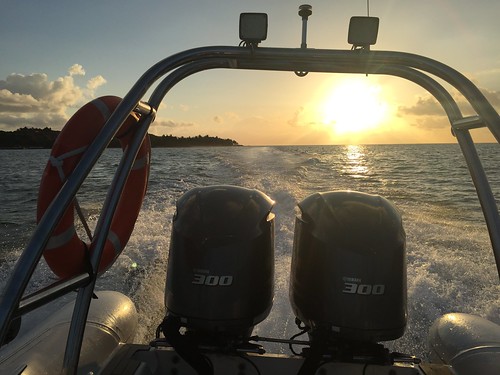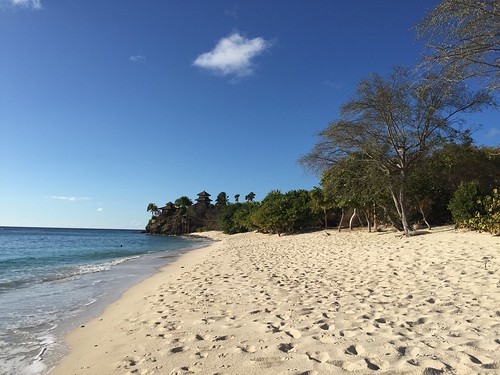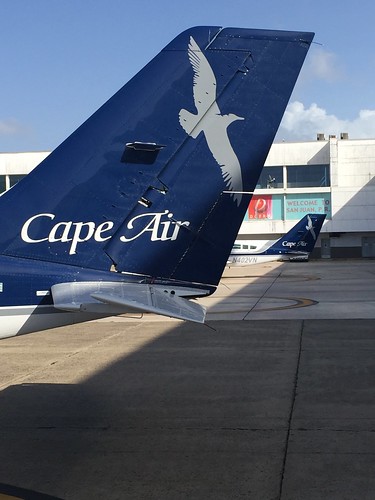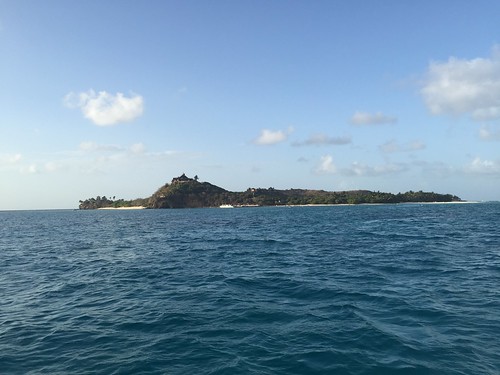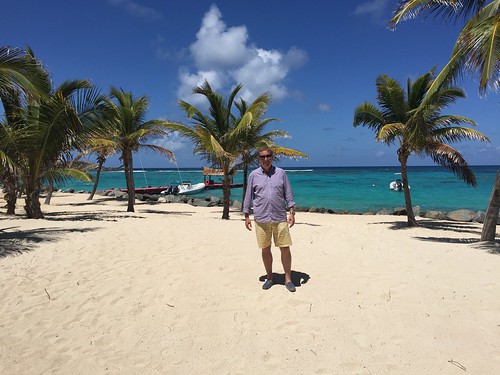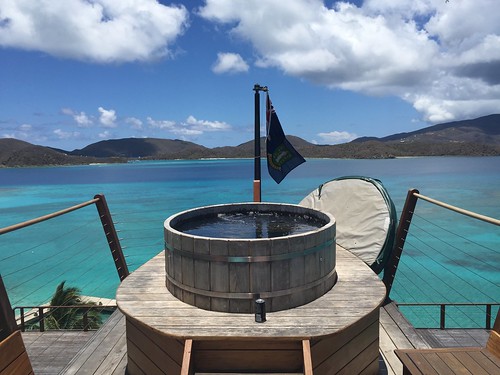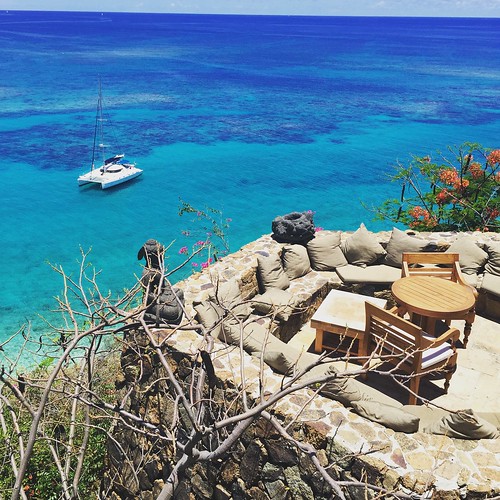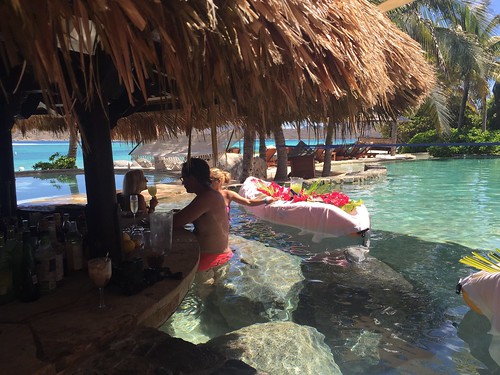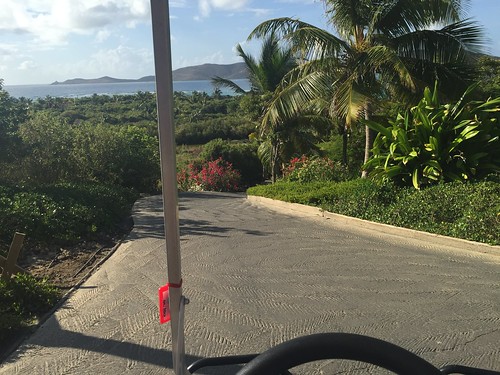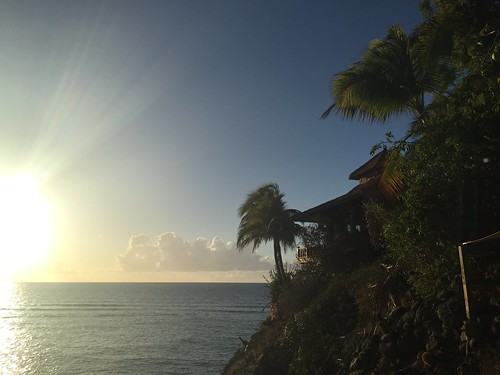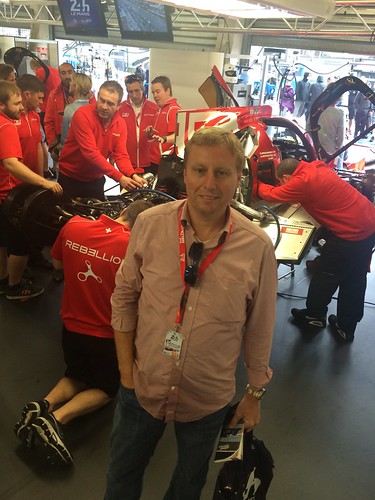
Last weekend I traveled to France with my parents to watch the 24 Hours of Le Mans, the oldest and possibly the most difficult endurance race for both racers and their cars. We arrived in Le Mans on Friday afternoon to pick up our tickets and to check out the race track. It was my first time at the 24 Hours and it had been on my to do list for a couple of years already.
Two of my friends were racing this year, Alexandre Imperatori in the LMP1 class and Ho-Pin Tung in the LMP2 category. I have been following Ho-Pin since 2003 when Grace and I produced a program for Chinese TV about him in London and at the Goodwood Festival of Speed. He has had an impressive career since then, among others winning the Formula BMW Asia, the German F3 and the Porsche Carrera Cup Asia.
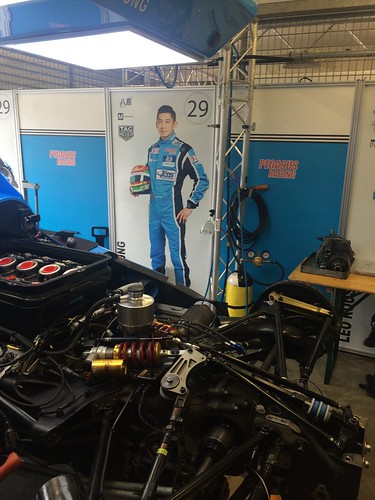
Alex I got to know a few years later in Shanghai, and his wife Karen is now actually a venture partner in our venture capital firm CrossPacific Capital. Alex is also a very accomplished race car driver, who among others won the A1 Grand Prix championship and the Porsche Carrera Cup Asia. This year he focuses on the World Endurance Championship and the VLN Endurance Racing Championship Nürburgring.
It was quite warm on the drive over to the circuit, but once we were there it suddenly started to rain hard! Luckily we brought umbrellas, but my shoes still got quite wet. Because there were not many people yet on Friday (the race starts Saturday at 3 PM) we used the time to get a feel for the place. We visited the village and went to take a look at both Ho-Pin and Alex’ pit lane garages. Behind the pit lane we coincidentally met Karen, who was on her way to see Alex in the driver parade in downtown Le Mans.
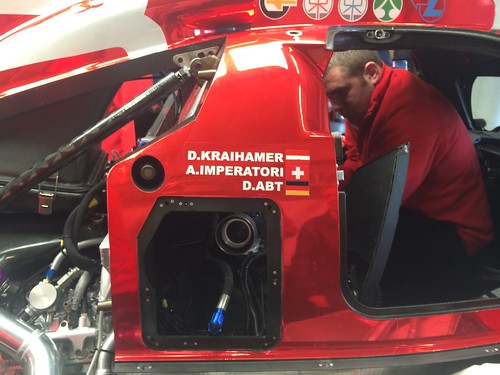
The next morning we arrived at the track by 10 AM, so we would avoid most of the traffic jams. That turned out to be a good idea, because it only took us an extra 20 minutes to park our car. We walked around a bit and then met Alex at the hospitality area. His racing team, the Swiss watch brand Rebellion, had 2 hospitality lounges and they were great. We spent quite some time in these locations over the next 36 hours.

The food in the lounges was excellent, with many different hot dishes being served all throughout the day and night, plus tons of desserts, many different cheeses and lots of snacks. Of course the wines and Champagnes on offer were great as well (this is France!). I think I had about 6 meals per day while watching the race in the lounge, so when I’m back in Vancouver I will need to run a bit more.
We had a quick lunch with Alex around 1 PM, I was surprised to see how relaxed he was 2 hours before the start of the race. He would be the starting driver for his car (the #13 in the LMP1 class) so soon after he had to leave. Then Karen came over and I talked with her about some business deals that we had looked at over the past days.

Pit lane before the start
Half an hour before the start we went over to the Rebellion pit lane garage to watch the start of the 24 Hours from there. That was quite exciting, the atmosphere is obviously very different from when you’re outside on the grandstands. After spending the first few rounds on the ground floor we went up into the main grandstand ourselves to watch the race from above.
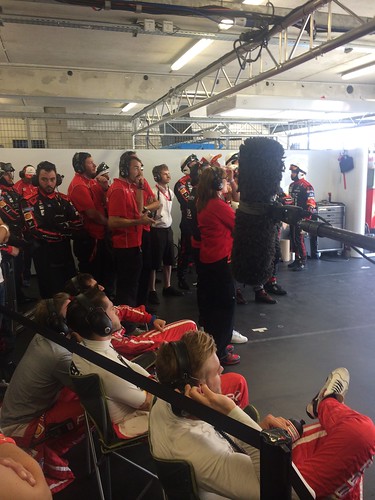
Watching the start of the race in the Rebellion team garage with the other drivers
While there we saw on the screens that a car caught fire and leaked oil and that another car crashed into it from behind. When the cameras zoomed in we realized that the car that had crashed was Alex’ car! It soon became clear that it was not a major accident and that he hadn’t been hurt, but the car had to be get back to the pitlane to be repaired.

Alex’ car gets repaired
We went back there as well to watch the repair process from the back of the garage. The atmosphere was quite stressful, but I was surprised to see how well organized the mechanics were. Because of the accident the safety car went out, so the team did not lose too many rounds to the competition, but having this happen to you early in the race is bad luck of course. The crew managed to repair the car in a couple of minutes and we left to have a drink in the lounge and watch the race unfold from there.

With H-Pin Tung behind the pit lane
Then I got a WeChat message from Ho-Pin, whose pitlane garage was just next to that of the Rebellion team. He had not driven yet, but when we met up he was also quite relaxed. I guess that’s what sets the professional drivers apart from the rest. I had not seen him in a while (he lives in China and Holland, and I am now mainly in North America) and it was good to catch up.
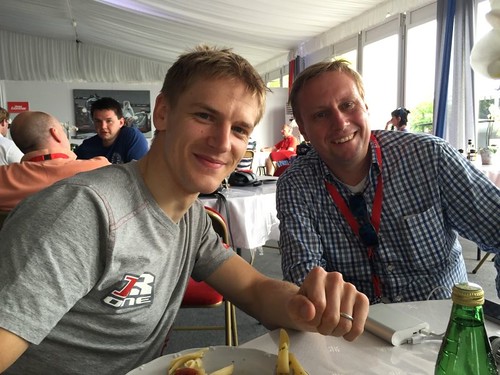
Alex during a break in the race
Back in the lounge Alex had changed to jeans and a t-shirt for a meal with Karen (pasta again for him). Despite his accident (which wasn’t his fault) he was in good spirits, he just felt unhappy that his car had the bad luck to be at the wrong place at the wrong time. Pretty cool, I guess for him it’s kind of normal that these things happen.
After that I went for a walk to one of the curves with my parents. It’s pretty cool to see the cars braking from 300 km/h to below 100 km/h in a split second and then accelerate again. If you see the cars coming up to the curve you think there is no way they can brake on time. Super spectacular!
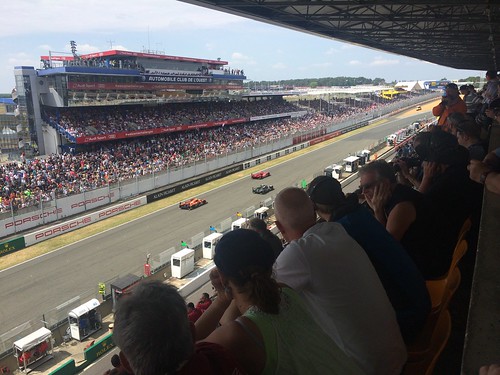
The LMP1 class had mainly hybrid vehicles and they are faster than the normal LMP1’s like the one Alex was driving in. They are also much more silent, and you can especially hear the difference when you are at one of the curves where they accelerate out of it. Not sure if I really like it though, the raw sound of Alex’ and Ho-Pin’s machines sounds much better to me and fits better to car racing.
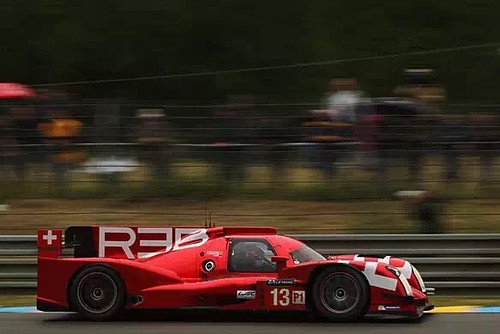
Alex’ LMP1 car
Just before it got dark Karen and I took a helicopter ride over the Le Mans circuit. When you’re only in the main grandstand area you see just a tiny part of the 13-km track, so taking a helicopter is excellent to get a better view of the circuit. The helicopter was quite fast, but the race cars easily outaccelerated us on the track below. Very cool to experience this, especially during sunset. We made one full round over the circuit and then did another half lap over the woods at a lower altitude over the circuit.
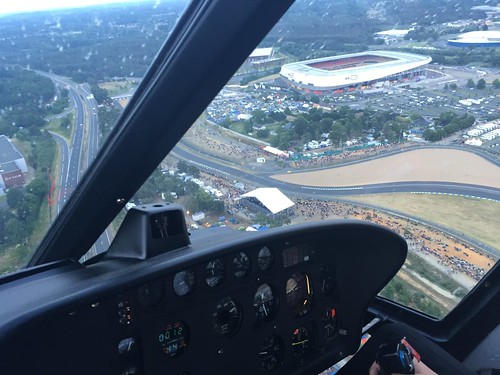
After that it became dark and the cars put on their big headlights to drive through the night. At night Le Mans looks very different from during daytime, more spectacular but also more dangerous. Alex took over as the driver of his team’s car around sunset and so he would be the first one to drive at night. When I asked him about that half an hour before was going to drive he said he actually liked it. You feel like you’re going much faster, he said, because you don’t see as much. Race car drivers are different from other drivers I guess!
Late at night we went back to the hotel for some sleep and the first thing I did when I woke up the next morning was to check how all the cars had been doing during the night. Luckily both Rebellion cars and Ho-Pin’s car were all still in the race, but they all lost some places during the night. On our way back to the circuit I checked all the news about what had happened during the night so I was well-informed by the time we got out of our car and heard the sounds of the engines again.
Back at the track I immediately noticed how tired most people looked. Many had probably stayed overnight and others had spent the night drinking and partying. That’s the nice thing about Le Mans, there are concerts at night and everybody is having a great time both during the day and at night. But of course in the morning it may be a bit harder to get adjusted to daylight.

We started with some coffees and a second breakfast in the lounge, before walking over to the pit lane garage. There had been a problem with Alex’ car and the mechanics were repairing it. When also the other Rebellion car came in we left, there is not enough space for the mechanics to work with visitors disturbing them. We decided to walk over to the main grandstand opposite the garage boxes and watch the repair process from there. It took quite some time but eventually they managed to get both cars back on the road again.
We walked for an hour along the track watching the race cars and then went to the lounge for lunch. We joined Karen and Nick Heidfeld for lunch, although I was still full from breakfast. Nick, who used the be a Formula One driver for many years, now drives the other Rebellion car. He still looked quite fresh 21 hours into the race. Nick told us he would drive the last stint of the race in the Rebellion #12 car, and Alex would be the last driver in the Rebellion #13 car.
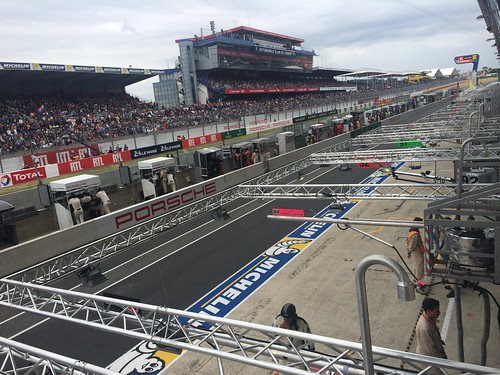
I did a few emails (I had hardly done any work since arriving in France) while watching the screens and then about 30 minutes before the end of the race we walked over to the team lounge above the pit lane. That’s probably the best place to watch the race.

Watching the finish of Le Mans 2015
You are literally rigth above the pit lane, so you see all the action below you, and just a few meters from the track. We watched the last laps from there and saw the Porsche team win the LMP1 one race. I was happy for Porsche, they hadn’t had a win in years (and of course the fact that my main car is a Porsche also helps!).
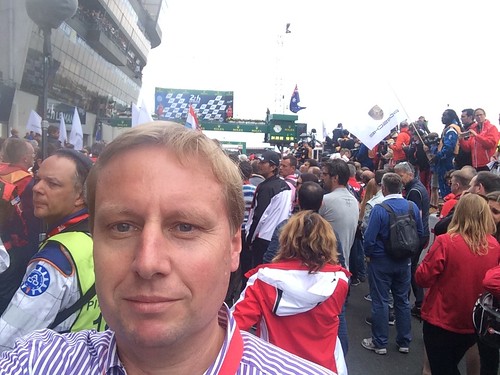
Selfie before the winner’s ceremony
Then we went down to the pit lane to watch the award ceremony. A huge crowd had formed, not sure how all these people suddenly got onto the track, but it was great to be cheering with them for the winners. Alex team finished 18th overall but they were best non-hybrid LMP1 one team, so they got trophies and bottles of Champagne on the podium as well.

View from the podium (taken by Alex!)
Then we walked over to the Pegasus garage box to congratulate Ho-Pin with finishing the race. He said it had been a tough race and he was obviously not too happy because of all the bad luck his team had had (last year he had a much better result), but I guess that’s life in endurance racing. At least his car made it to the finish line, but for a pro that’s not enough.

After the race with Alex and his Le Mans trophy
We didn’t want to leave at the same time as the crowds, so we had an early dinner in the lounge with Karen. There we waited for Alex, who was still busy with a briefing and interviews. When he came out the team was just starting a celebration party on the terrace of the Rebellion lounge. I took a picture with Alex and his trophy and then we left the Le Mans circuit around 5 pm. Most people had left already so we had no traffic jams at all.
I look back at an amazing weekend in Le Mans. This was a truly great experience, actually much better than any Formula One race I have been to. Of course it was extra special because we had access to many areas that the general public can’t visit and because my friends were driving, but even without that I think it would have been a great event. But being able to get away from the crowds and have nice drinks while watching the race made amazing instead of just great. I am very happy I had the chance to experience this and I hope to be back one day for another race!
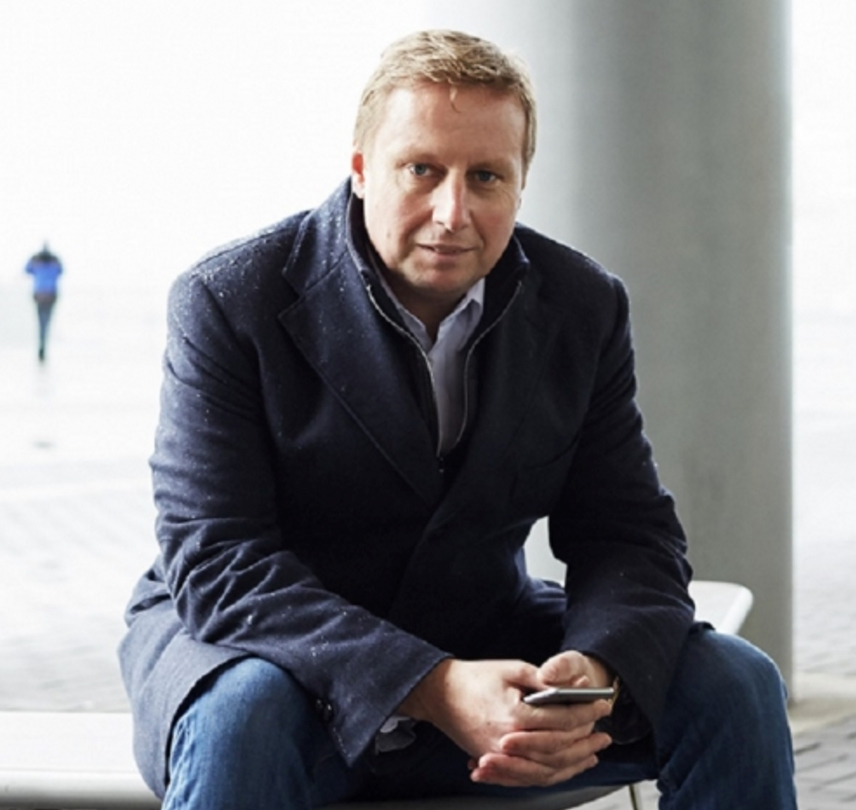
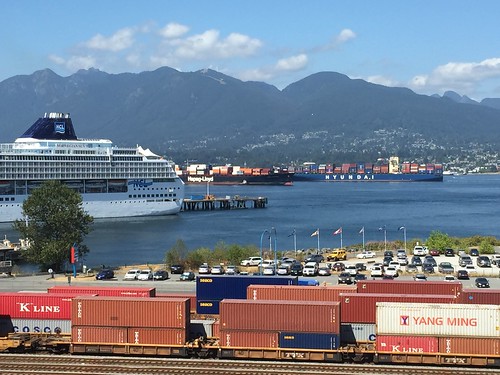
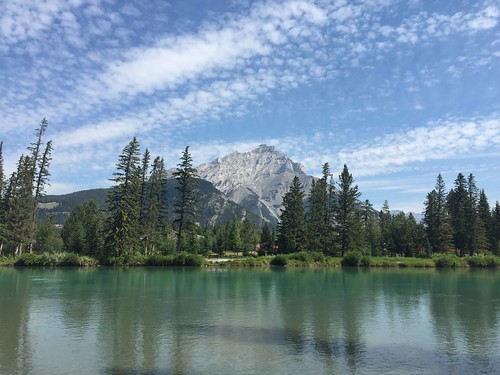 Grace’ family is visiting at the moment, so we decided to take them on a trip to Kelowna and Banff. The holiday was relatively short (we left on Thursday and came back on Tuesday), but it was totally worth it despite the long distances that we had to drive.
Grace’ family is visiting at the moment, so we decided to take them on a trip to Kelowna and Banff. The holiday was relatively short (we left on Thursday and came back on Tuesday), but it was totally worth it despite the long distances that we had to drive. 